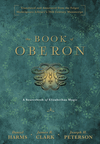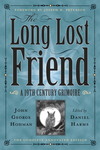Demons, Fairies, and Saints in a Renaissance Manuscript of Magic

Demons, fairies, and saints—together? These are not three categories we think of together. In past eras, however, perceptions of the supernatural world were much more fluid. Magicians of the Renaissance would not be averse to calling upon whatever beings were available that could teach them secrets, acquire treasure, or gain the love of another.
The Book of Oberon is the working manual of a magician from the time of Queen Elizabeth, William Shakespeare, and John Dee. The original is in the Folger Shakespeare Library, and it could be the largest collection of ritual magic texts ever published in English. The authors compiled many different texts of magic together to constitute a manual that would be the envy of any cunning man. Let's take a look.
- Demons Galore
Lists of demons have been staples of a ceremonial magician's arsenal for centuries. The more spirits upon which a magician could call, the greater the chance of finding one that could help. Many readers will be familiar with the list of the seventy-two demons in the Goetia. Nonetheless, that only represents a broader tradition of lists of spirits dating back centuries, in which magicians compiled lists of spirits who might be summoned. The Book of Oberon provides a list covering a different spirits than that in the Goetia—including some of the chief demons.Our list begins with Lucifer, who is so powerful the magician may not call him. His two lieutenants are Bell, or Bellsabube, who will slay a caster who does not use the proper incantation, and Satan, who desires to regain his throne in heaven. Following these are the kings of the four directions. One of these Orience, or Oriens, the king of the east, who comes in the appearance of a woman riding an elephant. Oriens is renowned for answering questions, foretelling the future, and consecrating books. After these, we have spirits for all manner of purposes—teaching the liberal arts, farming, building towers, or making one's enemies blind and deaf. If that is not enough, the author later returns to the four kings in a later list, describing their minions and their powers. This must have been a great treasure for a magician at the time.
Later in the manuscript, we see several experiments intended to raise a particular spirit. What separates this book from others is the inclusion of drawings of the spirits. Some of these may be sketched freehand, while others have been copied from a popular work on monsters written by a soldier who later tried to become a pirate king. One of these spirits is Birto, represented as a dragon, who can only be summoned in particular phases of the moon. Satan is a frightening hairy figure, while the horrific Mosacus is almost indescribable, with a trunk, forked tail, and a body covered with animal heads.
- A Train of Fairies
Yet one is not necessarily confined to infernal entities for rituals. On the long list of demons is an entry for Oberion, better known to us as Oberon from Shakespeare's A Midsummer Night's Dream. Oberion, we are told, is a mighty king who dwells in low places and waters and is governed by the sun and moon. He is responsible for acquiring treasure, teaching about precious stones and herbs, and granting invisibility. Later, we have some intensive rituals to call Oberion. One of them is quite complex: not only must the magician pray and use holy names to compel him, he or she must also negotiate with the four ministers of the fairy king to call him to appear.Oberion is hardly the only fairy mentioned in the book, however. We also have Micob, the queen of the fairies, along with the seals for her seven sisters. (These, in the mists of time, were once names of particular fevers, which have been re-appropriated in a friendlier dress.) All of these are able to teach a person about the properties of herbs, as well as to grant the power of invisibility.
How does a magician obtain this ability? He or she must undertake some effort, taking both a bed and a table to a remote area. The bed should be within a magic circle, while the table should extend without. After calling upon the spirits, they will come, bearing food and drink that the magician must not touch. Instead, he or she should look for the most beautiful woman among them, giving this person the magician's scepter to kiss. Once this has been done, the magician may invite the fairy to grant the ring of invisibility, and may take pleasure of her in the bed. It must be in this order, however—otherwise, the magician will be impure, and the fairy is justified in withholding the ring!
- Saint on a Thumb
One of the most unusual procedures in The Book of Oberon is a short conjuration to find a thief. On a day when the sun is shining, the magician should go to a secret place with a young boy and draw a circle on the ground. The boy's right thumbnail is scraped with a knife, and then anointed with olive oil. The magician speaks a prayer over the thumb up to three times. The boy is expected to gaze therein and see the thief, or whatsoever else is desired.Such procedures have a long pedigree, with similar rituals being used as long ago as the Babylonian Empire. But what spirit would be called upon to provide the vision? Another infernal being or a fairy? No—here the magician entreats none other than Saint George, the dragon slayer and patron saint of England, to make himself known in the thumbnail. For any who might doubt whether a saint might appear in such an uncomfortably small place, the author assures us that this experiment has been tested a thousand times.
We can only cover a few items from The Book of Oberon here. Readers will also find a large number of charms for various ailments, several rites to call a spirit into a crystal, an early manuscript of the protective grimoire The Enchiridion, and much more. Pagans, ceremonial magicians, historians of magic and the Renaissance, and general readers will all find something fascinating within its pages.

About Daniel Harms
Related Products


is subject to certain Terms and Conditions